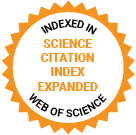Journal of Medical Internet Research
The leading peer-reviewed journal for digital medicine and health and health care in the internet age.
Editor-in-Chief:
Gunther Eysenbach, MD, MPH, FACMI, Founding Editor and Publisher; Adjunct Professor, School of Health Information Science, University of Victoria, Canada
Impact Factor 5.8 CiteScore 14.4
Recent Articles

Electronic cigarette (e-cigarette) use is a major public health problem and young adults aged 18-24 years are at high risk. Furthermore, oral nicotine products (ONPs) are growing in popularity in this population. Poly-use is widespread. New methodologies for rigorous online studies using social media have been conducted and shown to reduce nicotine use.

Obesity is a global public health challenge. Pharmacological interventions, such as glucagon-like peptide-1 (GLP-1) receptor agonists (eg, semaglutide) and dual GLP-1/gastric inhibitory polypeptide receptor agonists (eg, tirzepatide), have led to significant weight loss among users. Digital health platforms offering behavioral support may enhance the effectiveness of these medications.

Chronic pain, affecting more than 20% of the global population, has an enormous pernicious impact on individuals as well as economic ramifications at both the health and social levels. Accordingly, tools that enhance pain assessment can considerably impact people suffering from pain and society at large. In this context, assessment methods based on individuals’ personal experiences, such as written narratives (WNs), offer relevant insights into understanding pain from a personal perspective. This approach can uncover subjective, intricate, and multifaceted aspects that standardized questionnaires can overlook. However, WNs can be time-consuming for clinicians. Therefore, a tool that uses WNs while reducing the time required for their evaluation could have a significantly beneficial impact on people's pain assessment.

Vancomycin is commonly dosed using standard weight–based methods before dose adjustments are made through therapeutic drug monitoring (TDM). However, variability in initial dosing can lead to suboptimal therapeutic outcomes. A predictive model that personalizes initial dosing based on patient-specific pharmacokinetic factors prior to administration may enhance target attainment and minimize the need for subsequent dose adjustments.

Although large language models (LLMs) such as ChatGPT show promise for providing specialized information, their quality requires further evaluation. This is especially true considering that these models are trained on internet text and the quality of health-related information available online varies widely.

Falls among older adults are a significant public health issue due to their high incidence, severe consequences, and substantial economic impact. Exercise programs incorporating balance and functional exercises have been shown to reduce fall rates, but adherence and scaling up the interventions remain challenges. Digital technology offers a promising avenue to deliver this type of exercise, potentially improving exercise adherence and enabling self-management of exercise in the aging population.


The incidence of chronic diseases is increasing owing to the aging population; in particular, older adults living alone struggle with self-management and medical expenses. Digital health can contribute to medical cost management and health promotion, but its effectiveness for older adults living alone remains unclear. In a rapidly aging society, it is important to demonstrate the effect of digital health on improving the lives of older adults living alone and reducing the burden of chronic diseases.

As large language model (LLM)–based chatbots such as ChatGPT (OpenAI) grow in popularity, it is essential to understand their role in delivering online health information compared to other resources. These chatbots often generate inaccurate content, posing potential safety risks. This motivates the need to examine how users perceive and act on health information provided by LLM-based chatbots.

Noninvasive volumetric measurements during the first trimester of pregnancy provide unique insight into human embryonic growth and development. However, current methods, such as semiautomatic (eg, virtual reality [VR]) or manual segmentation (eg, VOCAL) are not used in routine care due to their time-consuming nature, requirement for specialized training, and introduction of inter- and intrarater variability.

The technology acceptance model (TAM) and the unified theory of acceptance and use of technology (UTAUT) are widely used to examine health care technology acceptance among older adults. However, existing literature exhibits considerable heterogeneity, making it difficult to determine consistent predictors of acceptance and behavior.

Axial spondyloarthritis (axSpA) is a chronic inflammatory joint disease affecting the spine and sacroiliac joints, requiring frequent, lifelong monitoring and treatment. This involves regular symptom monitoring, assessing medication tolerance and side effects, and prompt therapy adjustments. Typically, patients with axSpA attend prescheduled hospital visits, but once stable disease has been attained, these seldom align with periods of high disease activity. Remote monitoring and patient-initiated care offer flexible, need-based, follow-up options. However, knowledge about how patients with axSpA perceive and experience these approaches is limited. To effectively implement these strategies in clinical practice, understanding patient perspectives is crucial.
Preprints Open for Peer-Review
Open Peer Review Period:
-
Open Peer Review Period:
-
Open Peer Review Period:
-
















